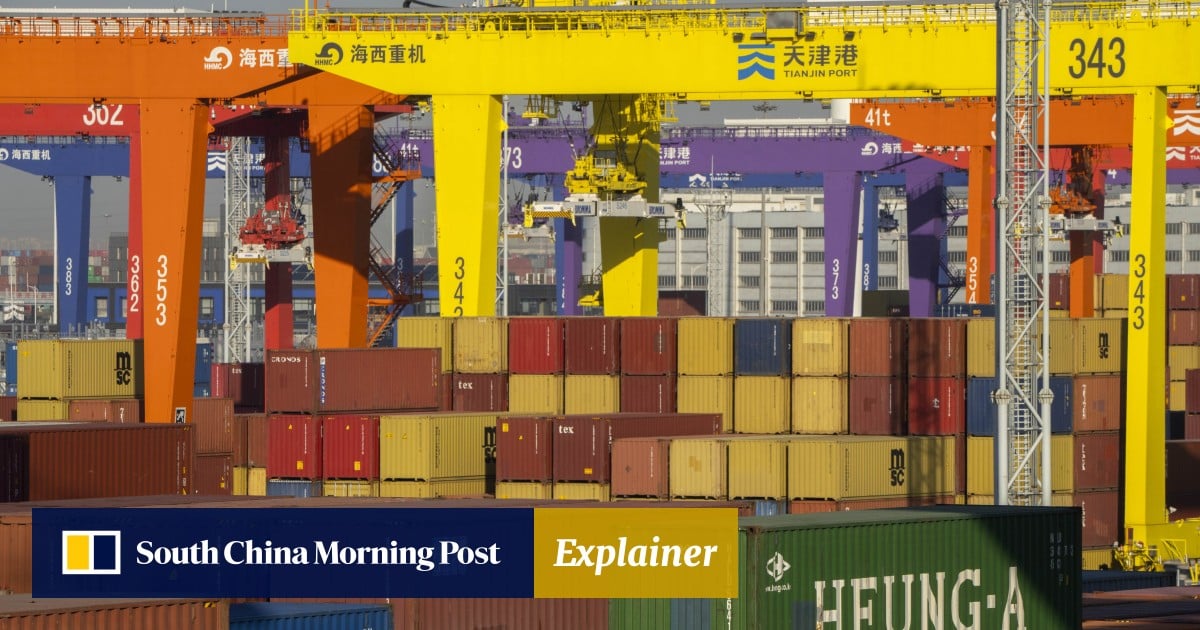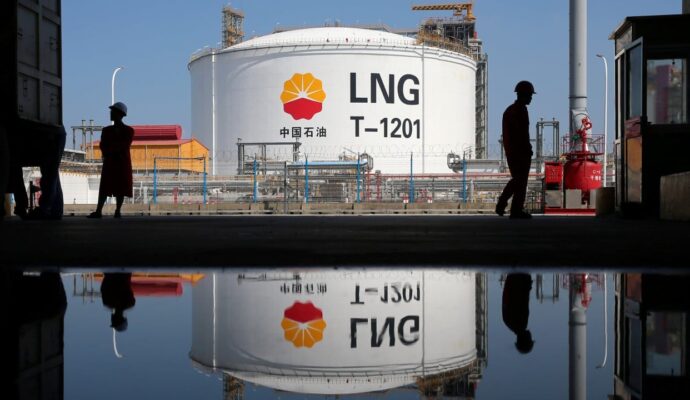
In the first half of the year, China’s exports declined by 3.2 per cent compared with the same period in 2022.
2. Commodity prices drive down imports
China’s imports fell by 6.8 per cent in June from a year earlier to US$214.7 billion, down from a fall of 4.5 per cent in May, and were below Wind’s expectations for a fall of 3.8 per cent.
“This decline was largely driven by falling commodity prices as global supply shocks fade away. Indeed, in seasonally adjusted terms, we estimate that import volumes rose 4 per cent, month on month, in June, up from 0.3 per cent growth in May,” said Lloyd Chan, senior economist at Oxford Economics.
But Chan added that given the weak reading in April, along with growing deflation risk, a struggling real estate sector and external headwinds, imports are expected to remain weak in the coming months.
Import volumes were little changed in June after reaching a 23-month high in May, and analysts expect they will pick up in the coming months.
In the first half of the year, China’s imports fell by 6.7 per cent, year on year.
3. A broad-based slowdown across main trading partners
Exports to all of China’s major trading partners recorded a double-digit decline in June.
Shipments to China’s largest trade partner, the Association of Southeast Asian Nations, fell by 16.86 per cent compared with a year earlier.
Exports to the European Union, meanwhile, declined by 12.92 per cent, year on year, while shipments to the United States dropped for the 11th consecutive month, with the 23.73 per cent decline in June being the sharpest fall since November.
In contrast, exports to Russia in June increased by 90.93 per cent, compared with the same month last year.
The export decline was, according to Chan at Oxford Economics, broad-based across main trading partners.
4. Surplus narrows from a year earlier
With the fall in exports outpacing that of imports, China’s total trade surplus narrowed to US$70.62 billion in June from US$97.4 billion a year ago. The trade surplus had stood at US$65.8 billion in May.
But according to Chan at Oxford Economics, the goods trade balance in the second quarter still expanded to US$226.6 billion from US$203.4 billion in the first three months of the year.
5. Is the worst of the decline in foreign demand over?
Analysts at Capital Economics expect exports to decline further before bottoming out towards the end of the year, with the global downturn in goods demand continuing to weigh on shipments.
“But the good news is that the worst of the decline in foreign demand is probably already behind us. Recessions still loom over developed economies, but these are likely to be mild and have only limited impact on Chinese exports,” they said.
“Meanwhile, shipments of green technology, including Chinese-made electric vehicles, batteries and solar panels, may continue to grow rapidly, helping exports return to growth.”
Chan at Oxford Economics pointed to the export orders subindex of China’s official manufacturing purchasing managers’ index, which slipped to a five-month low of 46.4 in June.
Weak imports and rising deflation risk point to slowing growth momentum, bolstering the case for more policy stimulus to support the economic recovery
“We retain our cautious outlook on China’s exports in the second half of the year, as major central banks look to tighten monetary policy further. Signs of fragile demand have emerged, as shown in falling commodity prices and sharp declines in South Korea’s new export orders,” he added.
But imports, the Capital Economics analysts added, are likely to pick up in the coming months, with fiscal stimulus measures expected to boost infrastructure spending later this year and support commodity imports.
International travel is also expected to continue to recover, raising the potential for a further increase in fuel imports, they added.
“Weak imports and rising deflation risk point to slowing growth momentum, bolstering the case for more policy stimulus to support the economic recovery,” Chan said.
He expects China’s central bank to cut the medium-term lending facility rate by another 10 basis points in the second half of the year, after having lowered the policy rate from 2.75 to 2.65 per cent in June.

